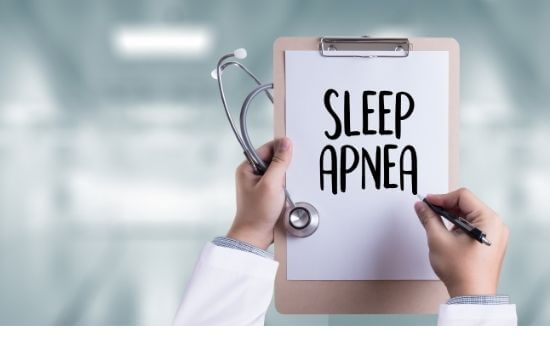Sleep apnea can be defined as a sleep disorder in which a person’s breathing is obstructed when he’s sleeping. It can be very serious if left untreated as some people with sleep apnea can experience ceased breathing countless times when sleeping. This affects the quality of their sleep and in extension their lives as a whole. Oral appliance therapy for sleep apnea might be the right solution.
There are basically two categories of sleep apnea, and they are
- Central Sleep Apnea: This type of sleep disorder is mainly due to a disturbance in the brain’s respiratory center.
- Obstructive Sleep Apnea: A person experiences this sleep apnea when his upper airway is blocked (either fully or partially) as he sleeps. Often times, this results in snoring.
An individual could experience a combination of both central and obstructive sleep apnea.
Table of Contents
Oral Appliance Therapy – An Overview
Oral appliance therapy for sleep apnea involves a person wearing a mouthpiece that fits like an orthodontic retainer. This device is only worn during sleep and the purposes they serve depends on the type you are wearing. Although the preferred method of treating obstructive sleep apnea is the CPAP machine, oral appliances have gained a lot of popularity over the years and have been preferred by many who are victims of obstructive sleep apnea.
Types of Oral Appliance Therapy
- Jaw Repositioning Devices: These oral appliances prevent the blockage of a person’s upper airway by shifting the jaw forward while he sleeps. This keeps the soft tissues in the mouth and throat from collapsing and blocking the airway.
- Tongue Holding Devices: Sometimes, the tongue could also collapse backward and block a person’s airway when asleep. The tongue holding devices prevents this from happening as it holds the tongue in a neutral position all while the person sleeps.
The type of device that a person experiencing obstructive sleep apnea uses is dependent on what usually causes his apnea. Due to this, some persons might have to use an oral appliance that serves both functions listed above simultaneously.
Determining the Right Appliance For You
If you experience serious sleep apnea, you would need to pay a visit to your doctor. Your doctor after examining you will confirm if you are eligible for oral appliance therapy. If yes, he would most probably refer you to a renowned sleep dentist that will determine the best sort of appliance for you, usually after a short examination. Thereafter, the doctor creates digital and physical impressions of your teeth and sends them to a dental lab for it to be made.
Once the lab receives your model, it usually takes a week before your appliance is created. When it is ready, you will have to go back to the dentist’s office so he could adjust the fitting for your maximum comfort and its’ efficacy. You’ll need to book subsequent appointments with your dentist so as to monitor your progress and if the appliance really works.
Obstructive sleep apneas have been known to affect at least 25% of men and 15% of women worldwide. If you are one of those, you should visit your doctor today and get it treated.

